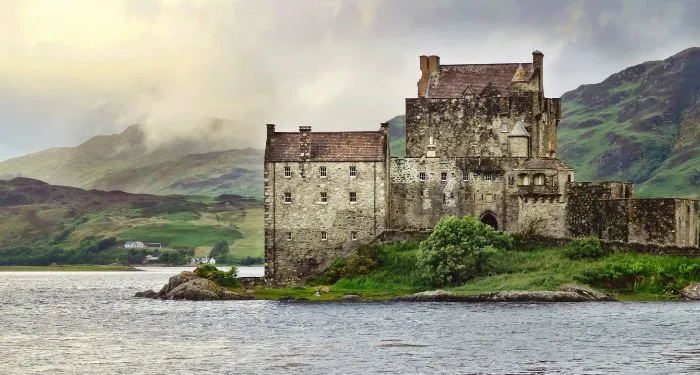In 2023 the Gulf states supplied around 30 percent of the world’s crude oil imports. They all own sizable National Oil Companies (NOCs); Saudi Aramco is the world’s largest oil firm. And it is not just a matter of oil: they are also ramping up natural gas production. Only the United States exports more liquefied natural gas than Qatar.
When it comes to addressing the climate crisis, the Gulf NOCs are fully aligned with the Western giants. They pledge to reduce emissions—by investing in renewables and technologies like carbon capture—while expanding oil and gas production.1 But the Gulf firms have a significant advantage. Where ExxonMobil lobbies governments to pass favorable legislation, the Gulf states directly shape global climate policy.
Their influence is especially visible at UN climate talks, such as Conference of the Parties (COP). Sultan Al Jaber, the head of the Abu Dhabi National Oil Company (ADNOC), presided over the last edition. As I noted in these pages, at COP28 Gulf NOCs like Saudi Aramco and ADNOC greenwashed their accelerating hydrocarbon extraction by pledging to also invest more in renewables. More of the same can be expected from COP29, which starts today in Baku, Azerbaijan. Like the UAE, Azerbaijan is wholly dependent on fossil fuels: oil and gas account for some 90 percent of its exports and up to half of its GDP. Mukhtar Babayev, who for more than two decades worked at Azerbaijan’s NOC, will be master of ceremonies. Elnur Soltanov, the deputy energy minister, is the event’s CEO. Last week the campaign group Global Witness, posing as fake oil and gas agents, met with him and filmed him agreeing to facilitate fossil fuel deals at the event.
If the focus in Dubai was on reaching an agreement to “transition away” from fossil fuels, Baku is being described as the “finance COP.” It is now clearer than ever that poorer countries can neither reduce their carbon emissions nor deal with the impacts of the climate crisis without monetary support. This is where “climate finance” comes in. The term refers to the various channels by which funds are raised for projects, mainly in the Global South, that address these issues. Those funds are needed for a range of activities: building green infrastructure, promoting conservation, investing in renewables, repairing damages, and so forth. They come from diverse sources: government development banks and aid agencies, multilateral organizations such as the World Bank and International Monetary Fund, and the private sector.
Debates around climate finance tend to dwell on the gargantuan sums needed to shift our energy systems towards renewables. At the last COP, for instance, the conference’s conveners estimated that between five and seven trillion dollars will be needed annually “in greening the global economy by 2030.” Earlier this month the UN published a report noting that poorer countries were likely to received ten to eighteen times less funding than they need for climate adaptation. These are indeed alarming figures. A further complication is that funding inevitably comes with strings attached, most often in the form of loans at market rates that put their recipients deeper in debt.2 Governments, multilateral organizations, and private firms are all vying to shape climate finance markets—and their interests do not always align with the planet’s. These contradictions are likely to be laid bare in Baku, where Gulf states in particular are planning to pledge vast sums of money.
*
The Gulf states see no conflict between expanding hydrocarbon production and simultaneously investing in the green transition. If anything, they view the fight against climate change as a profit-making opportunity. Consider ACWA Power, a Saudi-owned energy firm that operates more than 280 subsidiaries across the world. On the one hand, ACWA is responsible for delivering 70 percent of Saudi Arabia’s planned renewable energy projects. (The country aims for half its energy to come from renewables by 2030.) It is currently building an enormous wind power plant in Azerbaijan that, when completed in 2025, will be that country’s largest renewable energy facility. It is also the official “energy and water partner” of COP29 and in this capacity will shape policy discussions. On the other hand, ACWA is still firmly anchored in oil and gas: in 2023 the company generated more than 90 percent of its electricity from plants fired by fossil fuels.
The Gulf’s enthusiastic investment in climate finance is predicated on a similar understanding. Three of the world’s six biggest sovereign wealth funds (SWFs)—that is, state-owned investment funds—are headquartered in the Gulf; collectively they hold more than $3.5 trillion, much of which comes from oil and gas exports. The Gulf states are spending the money alongside their other petrodollar wealth to shape who provides climate finance and who receives it. In short, they are playing all sides of the energy market.
This trend was on full display at COP28. During the early days of the conference, the UAE established a new private sector climate fund, Altérra, into which it poured $30 billion—more than a third of the total climate financing raised in Dubai. (The five multilateral climate funds established under the UN Climate Convention collectively raised little over $10 billion.) Altérra now bills itself as the “world’s largest private investment vehicle for climate change action” and has set a goal of mobilizing a further $250 billion by 2030. It aims to “bring unprecedented scale to address humanity’s most urgent challenge and supercharge the transition to a net-zero climate-resilient future.” Through a complex structure of nested ownership, it is largely controlled by Sheikh Tahnoun bin Zayed Al Nahyan—a member of the UAE’s ruling family, the country’s national security advisor, and the president’s brother. The firm is listed in Abu Dhabi’s financial free zone, the Abu Dhabi Global Market, where corporate and income tax are not levied.
As a private firm, Altérra aims to make above-average returns for its owners and investors. It operates not alone but as a “fund-of-funds,” partnering with asset management and private equity giants, notably BlackRock, Brookfield, and TPG Capital. By placing its capital in funds those firms manage, Altérra profits from their investments in infrastructure and other assets around the world. The portfolio is climate-agnostic—ie even includes fossil fuel stocks and plants in the Global North. Shortly after Altérra placed $650 million in BlackRock’s Global Infrastructure Fund IV, it jointly purchased a fossil gas pipeline on the eastern seaboard. This is indeed a perverse kind of “climate change action.”
Other Gulf governments and SWFs have invested billions of dollars in renewable and low-carbon technologies while remaining firmly grounded in hydrocarbons. Consider Saudi Arabia’s Public Investment Fund (PIF), which has over $900 billion in assets. The fund owns about 8 percent of Saudi Aramco and 44 percent of ACWA Power but it is branching into renewables and other green projects, recently allocating over $19 billion into sustainable investments. PIF is a founding member of the One Planet SWF Network, an initiative established after the Paris Agreement, which aims to channel sovereign wealth into green assets. (Three of the other five founding members are Gulf-based: SWFs in Abu Dhabi, Kuwait, and Qatar.) Likewise, a subsidiary of Abu Dhabi’s SWF, Mudabala, produces more than 350,000 barrels of oil a day across eleven countries, even as it finances solar and wind farms in India. Mubadala is also one of three shareholders of Masdar, the Al Jaber–chaired renewable energy firm that runs the world’s largest single-site solar power plant.
*
Another prominent form of climate finance is carbon offsetting: schemes in which governments, companies, or individuals fund projects that purportedly reduce carbon emissions. Such reductions are repackaged as financial assets known as carbon offsets (measured in tons of CO2), which are then sold to polluters, who use them to cancel out their own emissions. The carbon offset market is booming: Morgan Stanley predicts that, from about $2 billion in 2020, it will be worth $250 billion by 2050.
There are various types of offset projects, but the most common one aims at preventing deforestation. This September, for instance, at New York’s Climate Week, the LEAF Coalition—comprising the governments of Norway, the UK, the US, and South Korea, as well as corporations from those countries—pledged funds to protect sections of the Amazon rainforest in Pará, Brazil (incidentally, the country hosting COP30). “The state government will use the proceeds from the LEAF agreement to finance its statewide programs to further reduce deforestation and support…sustainable economic development,” the press release reads.
Carbon offsetting is beset with accusations of greenwashing, fraud, and human rights violations. For one thing, indigenous communities in Africa, South America, and Southeast Asia—crucial targets of offsetting projects—have been evicted from their forest homelands in the name of preservation. In 2023 the journalists Daisy Dunne and Yanine Quiroz compiled research on over sixty carbon offset projects, finding that 70 percent caused harm to Indigenous people and local communities. Earlier this year, Human Rights Watch documented how the Chong Indigenous people were expelled from their lands in southern Cambodia to make way for the Southern Cardamom REDD+ Project. Repeated evictions and displacement have led the UN Special Rapporteur on the rights of Indigenous Peoples, Francisco Calí Tzay, to call for a global moratorium on carbon offset projects.
There are also two methodological flaws with carbon credit accounting. One is that any calculation of the emissions saved through projects like forest protection rests upon a shaky counterfactual: how much carbon would have been released if it was not in place? This is obviously impossible to determine with any certainty. A study in Science of offset projects across six countries found that most did not reduce deforestation, and that carbon credits sold were used to “offset almost three times more carbon emissions than their actual contribution to climate change mitigation.”
The second problem is temporal. When a buyer purchases carbon offsets, they gain the right to pollute in the present. But it takes hundreds of years for a forest to absorb an equivalent amount of carbon, and there is no guarantee that the forest will stand for that long. In California recent wildfires have consumed large forested areas that were ostensibly protected by offsets purchased by companies like Microsoft and BP.
Unsurprisingly, the Gulf states are emerging as leading advocates of offsetting. This came to the fore at the African Climate Summit, convened in Nairobi, Kenya, in September 2023. Here a group of prominent Emirati energy and financial firms, known as the UAE Carbon Alliance, committed to buying $450 million worth of carbon credits over the next six years from the African Carbon Markets Initiative (ACMI), a coalition of African governments, carbon credit firms, Western donors, and multilateral organizations. The agreement made the UAE the largest financial backer of ACMI.
Saudi Arabia is likewise deeply involved in carbon markets. The Saudi businesswoman Riham ElGizy heads the Regional Voluntary Carbon Market Company (RVCMC), which was set up in 2022 as a joint venture between PIF and the Saudi stock exchange, Tadawul. (Soltanov, the CEO of COP29, has lauded RVCMC for creating carbon offset markets “at speed and at scale with global impact.”) In 2022 and 2023 RVCMC organized the world’s two biggest carbon credit auctions, at which more than 3.5 million tons worth of carbon credits were sold, 70 percent of them sourced from African offset projects; the principal buyers were Saudi firms, led by Saudi Aramco. Indeed, offsetting is central to Saudi Aramco’s official “sustainability” plan, accounting for around a third of the 52 million metric tons of carbon it pledges to reduce by 2035.
In addition to buying carbon offsets, Gulf companies are establishing the projects that generate them. Shortly before the COP28 summit, investigative journalists from SourceMaterial broke the story that Blue Carbon—a company owned by Sheikh Ahmed Al Maktoum, a member of Dubai’s ruling family—had signed deals with African governments to lease vast tracts of land, including 10 percent of Liberia, Zambia, and Tanzania, and an astonishing 20 percent of Zimbabwe. Blue Carbon, which has no experience in the industry, will either protect preexisting forests or plant trees in these areas, creating carbon credits to sell to polluters. Axel Michaelowa, a scientist at the University of Zurich, estimates that the carbon credits earned this way would be equivalent to all of the UAE’s annual carbon emissions.
In this light, the upcoming negotiations in Baku take on an ominous significance. Member nations at COP29 are expected to agree on a set of international trading standards for carbon credits. This October the Article 6.4 Supervisory Board, the body responsible for developing governance mechanisms for the carbon market under the Paris Agreement, released their proposals, which regulate how carbon credits are established and calculated but accept the system’s basic principles. The Financial Times noted that the rules could allow “oil-producing nations to avoid their responsibility to phase out fossil fuels or make cuts in their industrial emissions.” One fact has not been widely reported: Saudi Arabia currently chairs the Board, represented by Maria AlJishi, who worked for a long time at Saudi Aramco.
Climate finance is a programmatically market-led “solution” to the climate crisis in that it is predicated on further commodifying nature. By justifying extraction here by investing in so-called law carbon projects there, prolonging business as usual in the present while making vague promises about the future, it offers a lifeline to the fossil fuel industry. To understand where such policies come from, it would be remiss to focus solely on Western oil companies. Major oil producing states in the Global South—like the Gulf monarchies, Azerbaijan, and Brazil—also profit from these projects and agreements, which are in the end disastrous for the planet and its inhabitants. As we watch these states help steer the direction of COP negotiations, we should remember that they are not voices for climate justice but part of the problem.



















 English (US) ·
English (US) ·